In our last post, we broke down how to define target behaviors using observable, specific, and measurable language. But once you’ve defined what the behavior looks like, it’s time to ask the most important question:
Why is the student doing this—and what should they be doing instead?
That’s where replacement behaviors come in. And not just any replacement behaviors.
We focus on two distinct types:
- Functionally Equivalent Replacement Behaviors (FERBs): These meet the same need as the problem behavior. If a student yells to get attention, we teach them a better way to get attention.
- Alternative Replacement Behaviors: These don’t always meet the same need immediately—but they build long-term skills like coping, persistence, flexibility, or delayed gratification.
Both are essential. FERBs help us reduce the problem behavior by offering a more appropriate route to the same outcome. Alternative behaviors help students grow and manage the times when they can’t get what they want right away.
The replacement behavior you choose should depend on the function of the original behavior. Why is the student doing this? That’s the key to selecting the right replacement behavior. When students use inappropriate behaviors to get a need met—whether it’s to escape a task, get attention, or gain access—we can teach them behavior(s) to replace those inappropriate behaviors.
Look at our guide about writing effective Behavior IEP goals, if you want to learn more about this topic!
Now let’s take five common behaviors that we operationally defined in our last post, and show how the replacement behavior you choose should depend on the function of the original behavior.
Target Behavior: Aggression Toward Peers
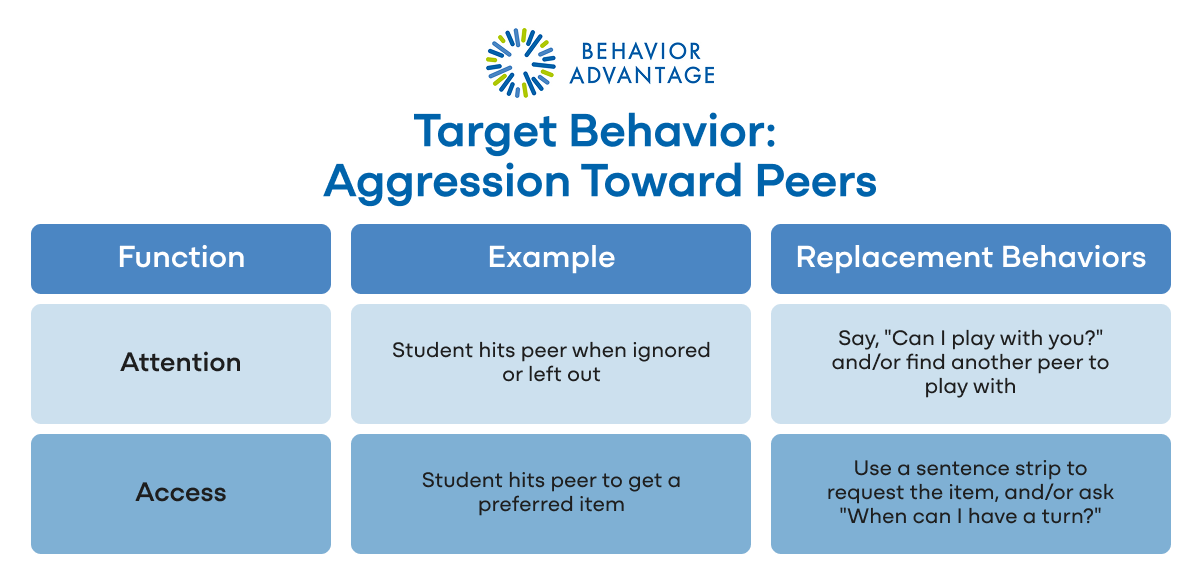
Target Behavior: Work Refusal
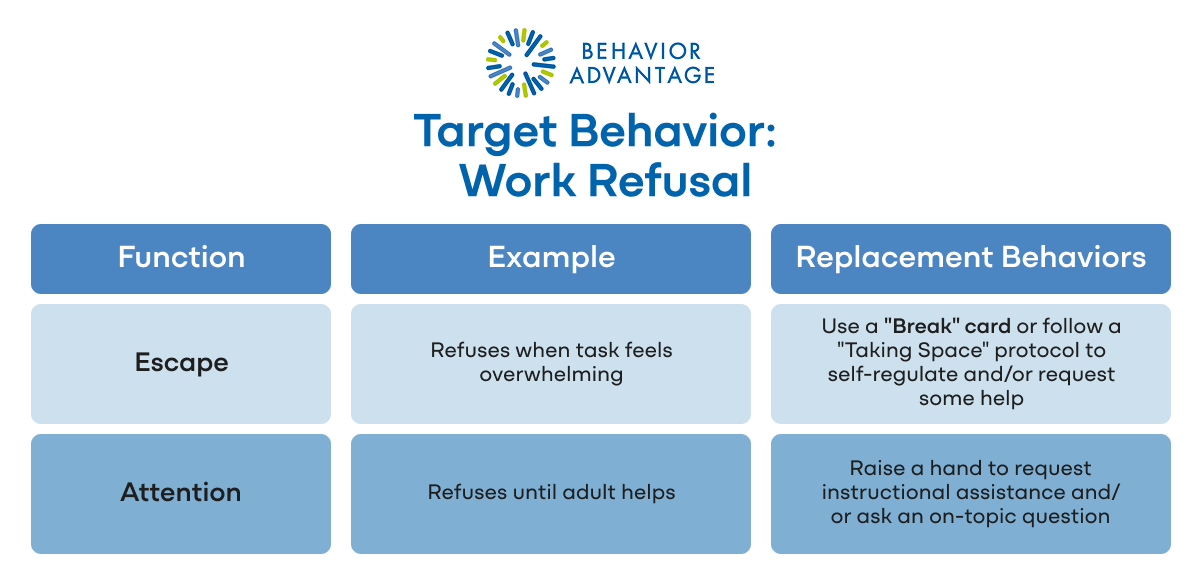
Target Behavior: Elopement
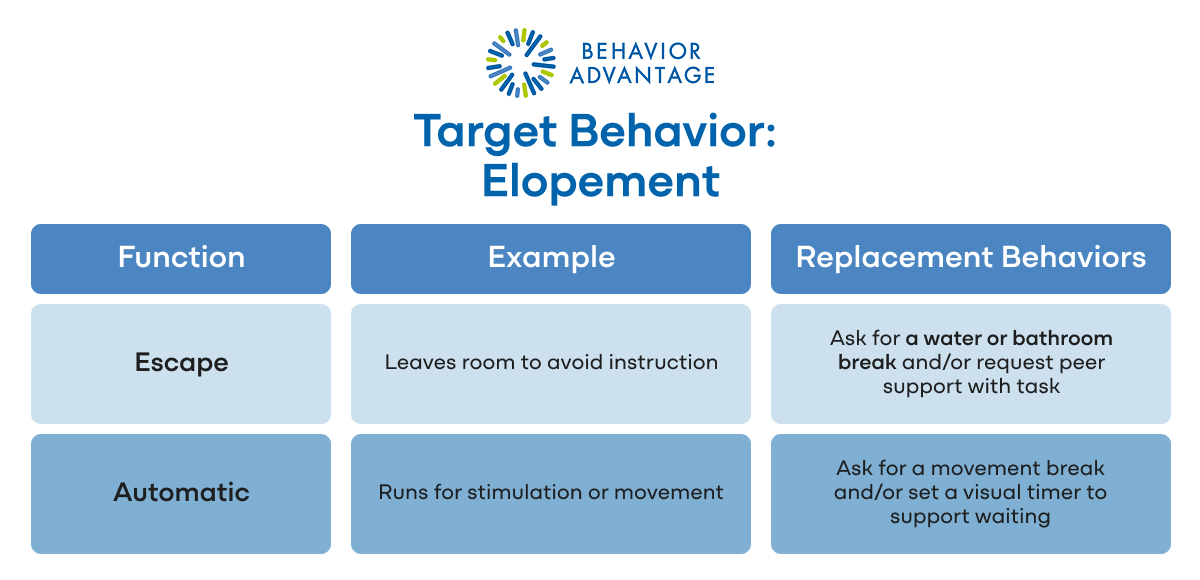
Target Behavior: Disrespect or Defiance
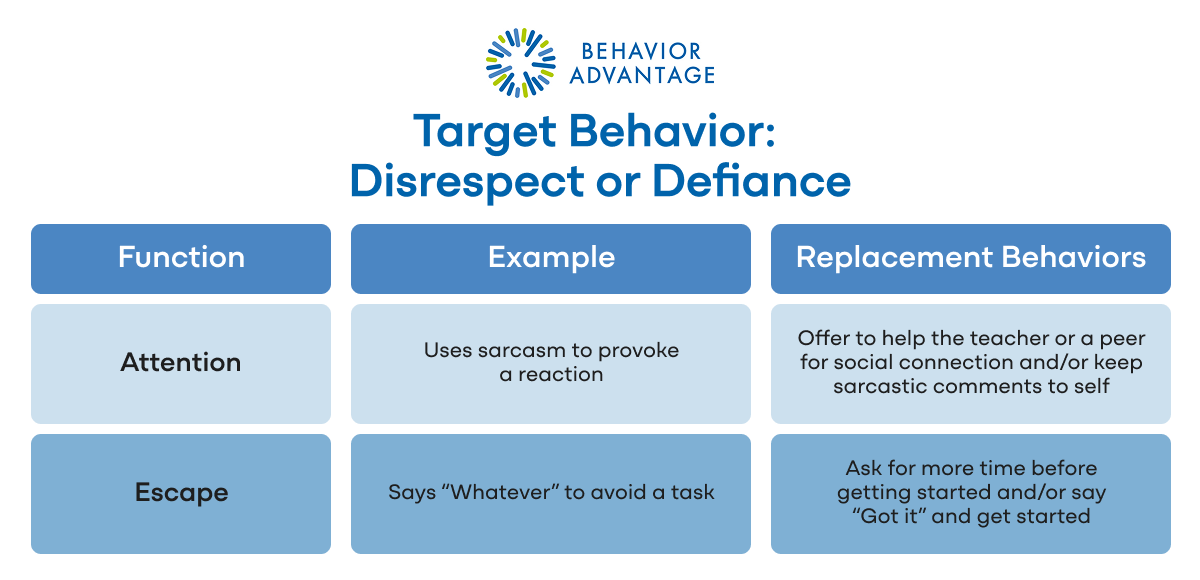
Target Behavior: Tantrum
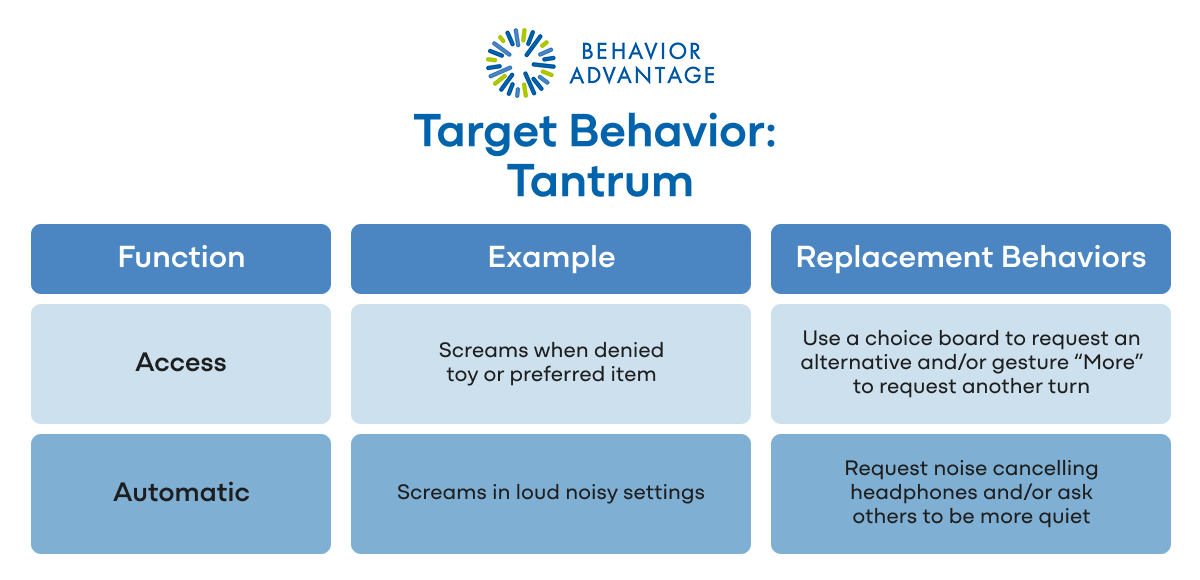
Closing Thoughts
Just like target behaviors, replacement behaviors should be clearly and operationally defined—using observable, specific, and measurable language. This ensures that everyone on the team is on the same page, targets instruction toward teachable behaviors in specific contexts, and helps us track progress over time.
Identifying the right replacement behavior—whether it’s a FERB and/or an alternative behavior—is a critical step in building an effective, supportive plan. But that’s only part of the puzzle. These skills don’t just show up overnight. They have to be taught, practiced, prompted, and reinforced with intention. The real power of a behavior plan isn’t just in identifying what needs to change—it’s in giving students the tools and support they need to change it.
In our next blog, we’ll walk through exactly how to teach replacement behaviors—from modeling and rehearsal to prompting in real-time and making sure students stay motivated to use their new skills.
Don’t just redirect behavior. Teach skills that stick.










